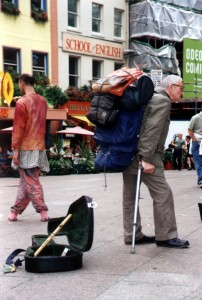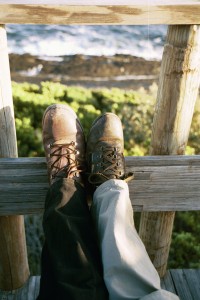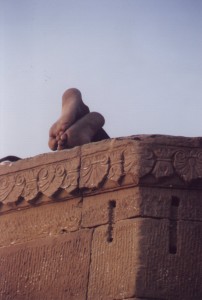When I was a teenager, back in the days of the blue aerograms, when letters still arrived with colorful stamps, I had pen pals from around the globe. I used to listen to a special program on BBC World that helped connect teens from distant countries. In high-school I had pen-pals from Iceland, Malaysia and China. I still have their pictures in one of my photo albums.

When our high school got the first computers connected to the Internet, (in a room kept specially cold, that one had to reserve in advance) I tried to recreate the excitement. There were a number of attempts, some lasted longer than others, but they all suffered from the same two problems:
* After the initial stage of students expressing curiosity and writing about their hobbies, their motivation to participate petered out.
* It was a lot of work. I was devoting time and energy to create activities that would cause them to stay on board and learn something about the country we were corresponding with. I seemed to be the one learning the most. I still remember how amazed I was when our friends from Finland wrote about the huge number of lakes they have and wanted to know how many we had. Eh, ahem, one… The kids weren’t particularly awed though.
So when the AWESOME teacher of deaf students from Conneticut, Arlene Blum, contacted me about a global project I was excited and nervous. Adjusting to the new school curriculum is difficult and time consuming and I was worried about the extra work. In addition, I was concerned about the repeated pattern of students losing interest. But how could I miss this opportunity?

Arlene started us off with a blog on Edublogs. Since we are both on Edublogs I believe that is how she found me. The blog has the advantage of being open and accessible (the comments and posts are moderated, of course!!!) . It is easy to work with and it has helped Arlene attract more schools. There are now 3 schools in the US, one in Australia, one in South Africa and one in Italy, not all equally active (and our school in Israel, of course!). Writing on the blog is good practice for the students and an excellent place to post videos that promote global feelings of friendship such as the one Arlene recently posted here or the summary of facts we have learned along with a moving video promoting friendship we sent in.
But the main disadvantage of the blog is that because of a need to protect our students, we don’t post pictures of students on the blog. Students with a hearing loss really want more visual modes of communication. They wanted to chat with the other students too but we can’t do that in any case because of the time differences. We also don’t share a common sign language!
So I suggested, following my experience with Edmodo with my course for adults, that we open a secure group for us there. The Facebook-like feel of Edmodo attracted the students and a large number of them wanted to sign up. We moderate the posts and comments there too. Some of them uploaded profile pictures. Not many actually write though. But I’ve decided to be pleased about the ones who do. I write updates about tales from our Global Friends on the board, so at least everyone is exposed to some information. I’ve also decided to be happy with the goal of having students expand their world knowledge. The benifits for their English is rather limited because most students take advantage of Google Translate and read the posts in Hebrew…
Since Edmodo supports videos, we’re currently trying to add a new component – students upolading videos of themselves. Not the same as chatting but will bring those foreign students to life! Some of my students suspect I’m making all of this up!



